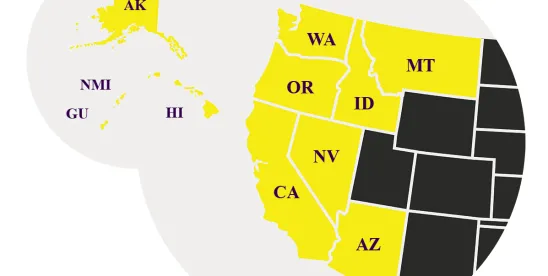On first glance, one might think that packaged tuna, price-fixing conspiracies, and uninjured class members have little in common. A closer look at the recent Ninth Circuit odyssey of Olean Wholesale Grocery Cooperative, Inc. v. Bumble Bee Foods LLC, however, shows that, when combined, these factors generate important class action jurisprudence.1
On 6 April 2021, a split three-judge panel of the Ninth Circuit adopted a rule prohibiting certification of proposed classes that contain more than a de minimis number of uninjured members.2 According to the panel majority, a class defined so broadly that it includes members who have not suffered an injury would not satisfy predominance—i.e., common questions would not predominate over individual issues—as required by Fed. R. Civ. P. 23(b)(3).
A year later, on 8 April 2022, the en banc Ninth Circuit squarely rejected the de minimis standard, suggesting that a class containing some, or possibly even a great many, uninjured class members may qualify for class treatment.3 In this respect, the en banc court’s decision appears to sanction a less-than-rigorous standard for class certification, resembling the oft-criticized “certify now, worry later” approach.4 In other respects, however, the Ninth Circuit’s decision may signal an effort by the court to strengthen its class certification rules. Regardless of how one views the decision, the en banc court’s decision in Bumble Bee Foods represents an important guidepost for district courts and class action practitioners in the Ninth Circuit.
CASE BACKGROUND
In the wake of a U.S. Department of Justice investigation into an alleged price-fixing conspiracy among the largest suppliers of packaged tuna in the United States, purchasers of the defendants’ products filed putative class actions alleging violations of federal and state antitrust laws. After the actions were consolidated for multidistrict litigation proceedings, the purchaser plaintiffs moved to certify three putative classes under Rule 23(b)(3).5
Plaintiffs argued that they could establish antitrust impact on a class basis through expert testimony. While plaintiffs’ experts opined that most putative class members overpaid for defendants’ products, and thus suffered antitrust injury, their analysis suggested that approximately 5.5% of the members did not suffer an injury.6 Defendants’ experts disagreed, opining that approximately 28% of putative class members suffered no injury.7 Reasoning that the experts’ disagreement was a merits question for the jury, the district court declined to resolve the dispute.8 The district court then certified plaintiffs’ proposed classes.
THE NINTH CIRCUIT’S CATCH AND RELEASE OF THE DE MINIMIS STANDARD
On appeal, a split three-judge panel held that the district court abused its discretion by not resolving the disputed expert testimony regarding uninjured class members.9 The panel majority reasoned that resolving this issue was critical because predominance would be defeated if the proposed class contained more than a de minimis number of uninjured class members. On that basis, the panel reversed the certification order and remanded for the district court “to resolve the factual disputes concerning the number of uninjured parties in each proposed class before determining predominance.”10
By adopting the de minimis standard, the Ninth Circuit moved out in front of many of its sister circuits with a sensible, yet rigorous, check on certification of expansively defined classes. The de minimis standard, however, survived for less than four months, when, on 3 August 2021, the Ninth Circuit vacated the panel decision and ordered the case be reheard en banc.
On rehearing, the en banc Ninth Circuit rejected the “argument that Rule 23 does not permit the certification of a class that potentially includes more than a de minimis number of uninjured class members.”11 Instead, according to the Ninth Circuit, Rule 23(b)(3) requires only that district courts consider issues related to the injury status (and, relatedly, Article III standing) of putative class members in the same manner courts consider other individualized proof issues for predominance purposes.12 The Ninth Circuit described this approach as rejecting “a per se rule” in favor of a “case-by-case” approach to the treatment of uninjured class members under Rule 23(b)(3).13 Applying this case-by-case approach, the Ninth Circuit affirmed the district court’s decision to defer resolution of the dispute over the number of uninjured class members until trial.
FURTHER GUIDANCE ON CLASS CERTIFICATION STANDARDS
The en banc Ninth Circuit also offered important class-certification-related guidance that may provide entities facing putative class actions with key defenses to class certification.
First, the Ninth Circuit held that a plaintiff seeking to certify a class “must prove the facts necessary to carry the burden of establishing that the prerequisites of Rule 23 are satisfied by a preponderance of the evidence.”14 In adopting a preponderance-of-the-evidence standard, the Ninth Circuit joined all other circuit courts of appeal that have considered the issue.15
Second, the Ninth Circuit stated that a plaintiff “may use any admissible evidence” to satisfy this burden.16 In support, the court cited the U.S. Supreme Court’s decision in Tyson Foods, Inc. v. Bouaphakeo, which it described as “explaining that admissibility of evidence at certification must meet all the usual requirements of admissibility and citing to Rules 401, 403, and 702 of the Federal Rules of Evidence.”17 While the concept that evidence presented at class certification must be admissible seems obvious, it is nevertheless contrary to Ninth Circuit precedent. In fact, in 2018, the Ninth Circuit held that a district court should consider inadmissible evidence when ruling on class certification.18 Although the Bumble Bee Foods court did not expressly address the applicable evidentiary standard, the court’s discussion may signal its willingness to limit the use of inadmissible evidence at the class certification stage in future cases.19
CONCLUSION
Over the past several years, the Ninth Circuit’s class certification rulings have oscillated between applying a lenient, plaintiff-friendly standard and requiring a strict, rigorous review of motions for class certification. The Ninth Circuit’s en banc decision in Bumble Bee Foods sends similarly mixed messages. Class action defendants, however, should take solace in the fact that the Ninth Circuit appears increasingly willing to clarify and, in some cases, strengthen its class certification rules. Accordingly, class action defendants should continue to challenge broadly defined classes that contain uninjured class members and ensure courts hold class action plaintiffs to their affirmative burden to prove, by a preponderance of admissible evidence, that their class claims are appropriate for certification.
ENDNOTES
1 See Olean Wholesale Grocery Coop., Inc. v. Bumble Bee Foods LLC, --- F.3d ---, 2022 WL 1053459 (9th Cir. 2022) (“Bumble Bee Foods II”); Olean Wholesale Grocery Coop., Inc. v. Bumble Bee Foods LLC, 993 F.3d 774 (9th Cir. 2021) (vacated on motion for rehearing en banc in Olean Wholesale Grocery Coop., Inc. v. Bumble Bee Foods LLC, 5 4th 950, 951 (9th Cir. 2021)) (“Bumble Bee Foods I”).
2 See Bumble Bee Foods I, 993 F.3d at 792–93; see also Robert W. Sparkes, III, Something is Buzzing in the 9th Circuit: How Canned Tuna, Bumble Bees, and Uninjured Class Members Combine for an Important Class Certification Ruling, K&L GATES HUB (Apr. 12, 2021) (discussing the panel decision in Bumble Bee Foods I).
3 See Bumble Bee Foods II, 2022 WL 1053459, at *9–10.
4 See, e.g., id. at *22–28 (Lee, J., dissenting) (criticizing the en banc majority’s decision to “[p]unt[]” the consideration of uninjured class to an unlikely-to-occur class trial).
5 See id. at *3–4.
6 See id. at *12, *15–19; see also Bumble Bee Foods I, 993 F.3d at 782–83.
7 See Bumble Bee Foods II, 2022 WL 1053459, at *12–13; see also Bumble Bee Foods I, 993 F.3d at 783.
8 See Bumble Bee Foods II, 2022 WL 1053459, at *14–15, *17–19.
9 See Bumble Bee Foods I, 993 F.3d at 792–93.
10 Id. at 794.
11 Bumble Bee Foods II, 2022 WL 1053459, at *9.
12 Id. at *8–9; see also id. at *9 n.12 (“Rule 23 also requires a district court to determine whether individualized inquiries into this standing issue would predominate over common questions[.]”).
13 Id. at *9 n.13.
14 Id. at *5 (emphasis added).
15 See id. at *5 & n.6 (citing cases from other circuits).
16 Id. at *6.
17 Id. (citing Tyson Foods, Inc. v. Bouaphakeo, 577 U.S. 442, 454–55 (2016)).
18 See Sali v. Corona Reg’l Med. Ctr., 909 F.3d 996, 1005–07 (9th Cir. 2018) (finding that the district court abused its discretion by excluding an admittedly inadmissible declaration from the class certification analysis).
19 The Ninth Circuit has signaled its potential openness to require evidence at class certification satisfy admissibility standards in other recent cases. See, e.g., Robert Sparkes, 9th Circ. Gets Tougher On Experts At Class Certification, LAW 360 (Jan. 11, 2021).





 />i
/>i
